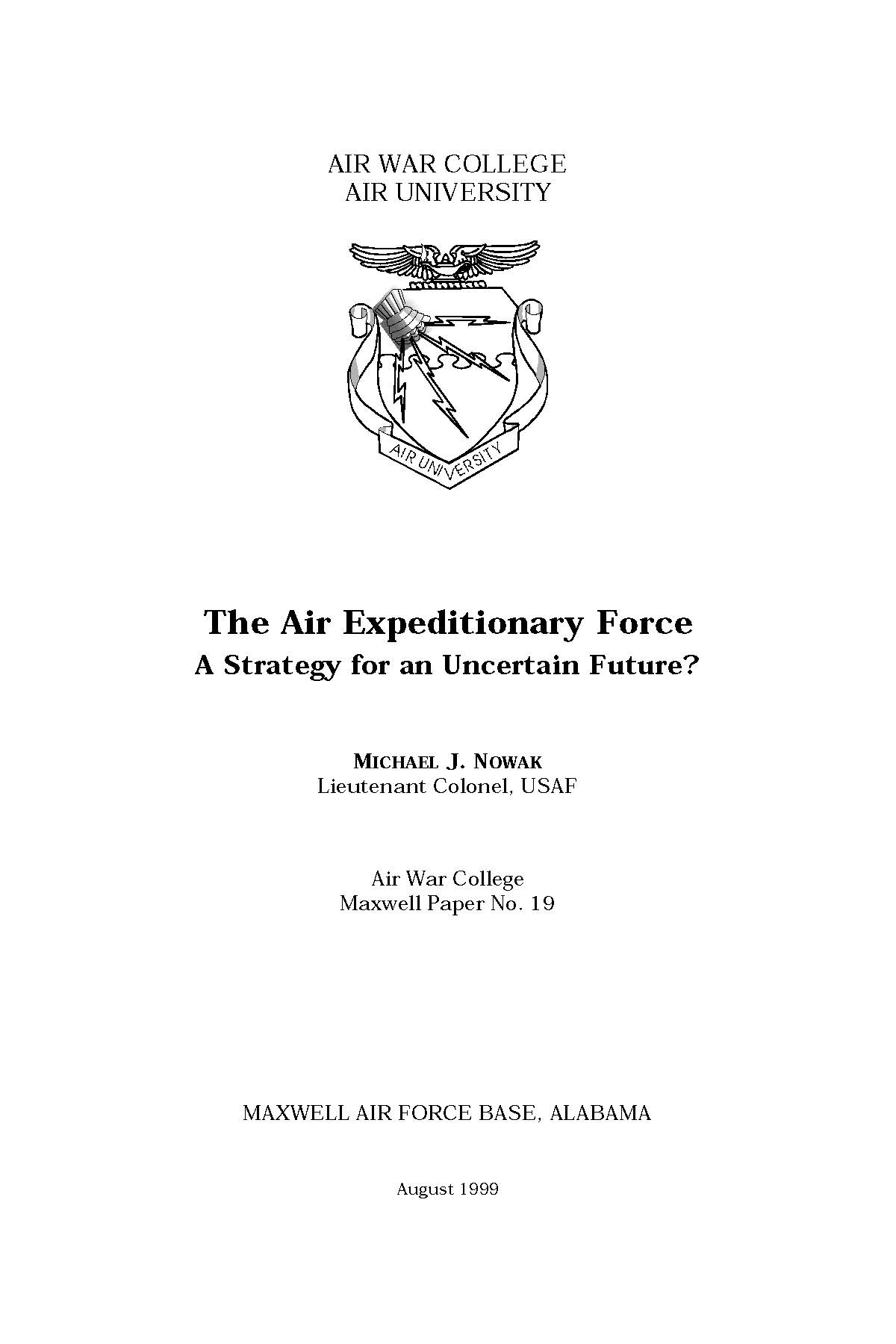 Contrary to initial expectations, the end of the cold war has not resulted in a spontaneous outbreak of interna -tional peace and stability. While the nuclear threat has diminished, previously suppressed ethnic and nationalistic rivalries have boiled over and become additive to existing trouble spots in Korea and Southwest Asia. In spite of these challenges, defense spending and military forward presence have declined as the lack of a peer competitor has deprived our national security strategy of a definable threat. The Air Expeditionary Force (AEF) attempts to deal with the uncertainty of the current volatile world by providing regional commanders in chief with effects-based packages of airpower that can quickly respond to US national secu -rity requirements. This employment strategy attempts to balance international uncertainty with a decreased forward presence and reduced force structure. Recently the Air Force has also touted the AEF as a tool to manage an operational tempo and deployment rate problem that is causing retention difficulties. In his paper Colonel Nowak, USAF, argues that while the AEF is a step in the right direction, the focus appears to be too narrow. Current Air Force AEF planning is oriented toward a conventional force-on-force-style aggression like those aggressions we have seen in Iraq and the former republics of Yugoslavia. However, the most probable use of an AEF will be in a noncombat role, supporting humanitarian or peacekeeping operations. In these "nontradi-tional" types of AEFs, personnel and leadership skills, as well as the force composition, will be markedly different from a combat-style AEF.
Contrary to initial expectations, the end of the cold war has not resulted in a spontaneous outbreak of interna -tional peace and stability. While the nuclear threat has diminished, previously suppressed ethnic and nationalistic rivalries have boiled over and become additive to existing trouble spots in Korea and Southwest Asia. In spite of these challenges, defense spending and military forward presence have declined as the lack of a peer competitor has deprived our national security strategy of a definable threat. The Air Expeditionary Force (AEF) attempts to deal with the uncertainty of the current volatile world by providing regional commanders in chief with effects-based packages of airpower that can quickly respond to US national secu -rity requirements. This employment strategy attempts to balance international uncertainty with a decreased forward presence and reduced force structure. Recently the Air Force has also touted the AEF as a tool to manage an operational tempo and deployment rate problem that is causing retention difficulties. In his paper Colonel Nowak, USAF, argues that while the AEF is a step in the right direction, the focus appears to be too narrow. Current Air Force AEF planning is oriented toward a conventional force-on-force-style aggression like those aggressions we have seen in Iraq and the former republics of Yugoslavia. However, the most probable use of an AEF will be in a noncombat role, supporting humanitarian or peacekeeping operations. In these "nontradi-tional" types of AEFs, personnel and leadership skills, as well as the force composition, will be markedly different from a combat-style AEF.
Author(s) • Lieutenant Colonel Michael J. Nowak, USAF
Year • 1999
Pages • 25
ISSN • 2575-7539
AU Press Code • MP-19